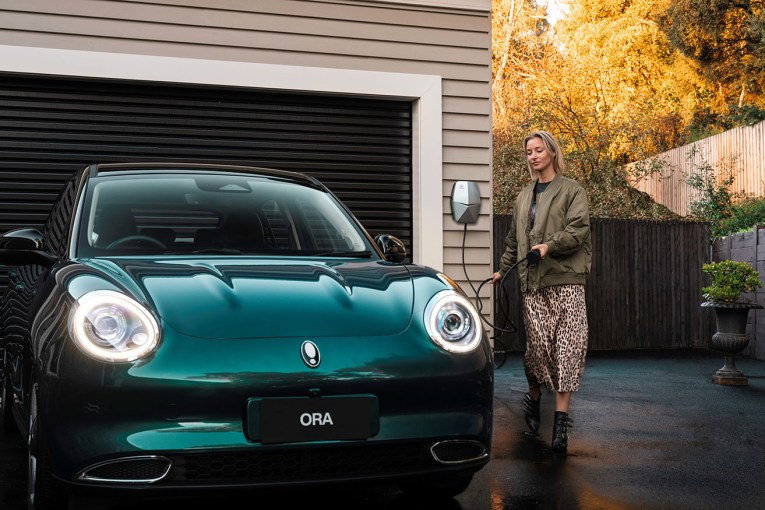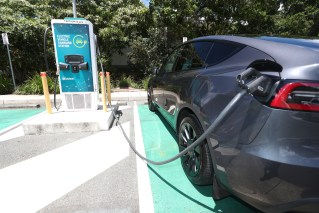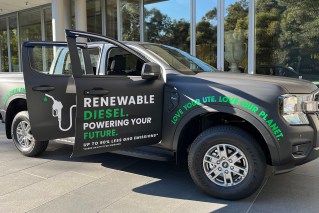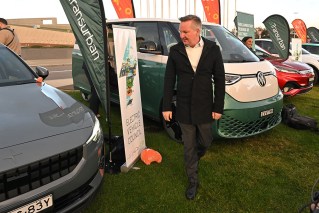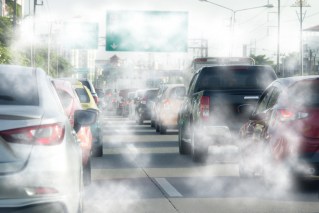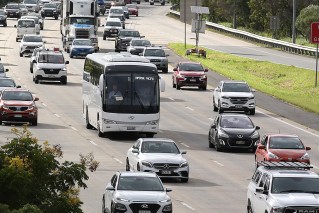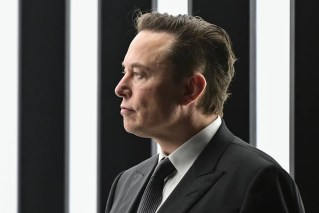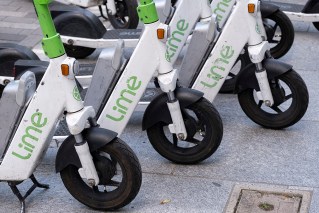Australia’s best SUVs – and why motorists are willing to pay top dollar
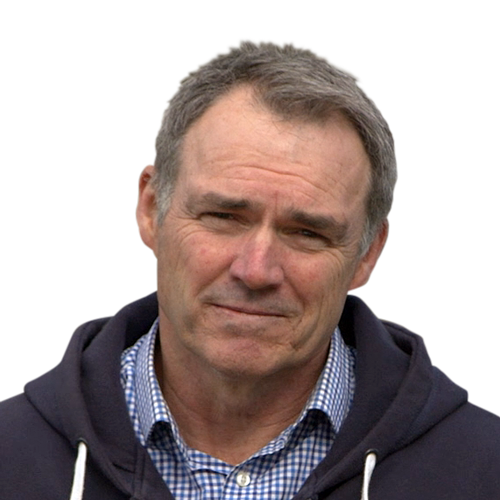
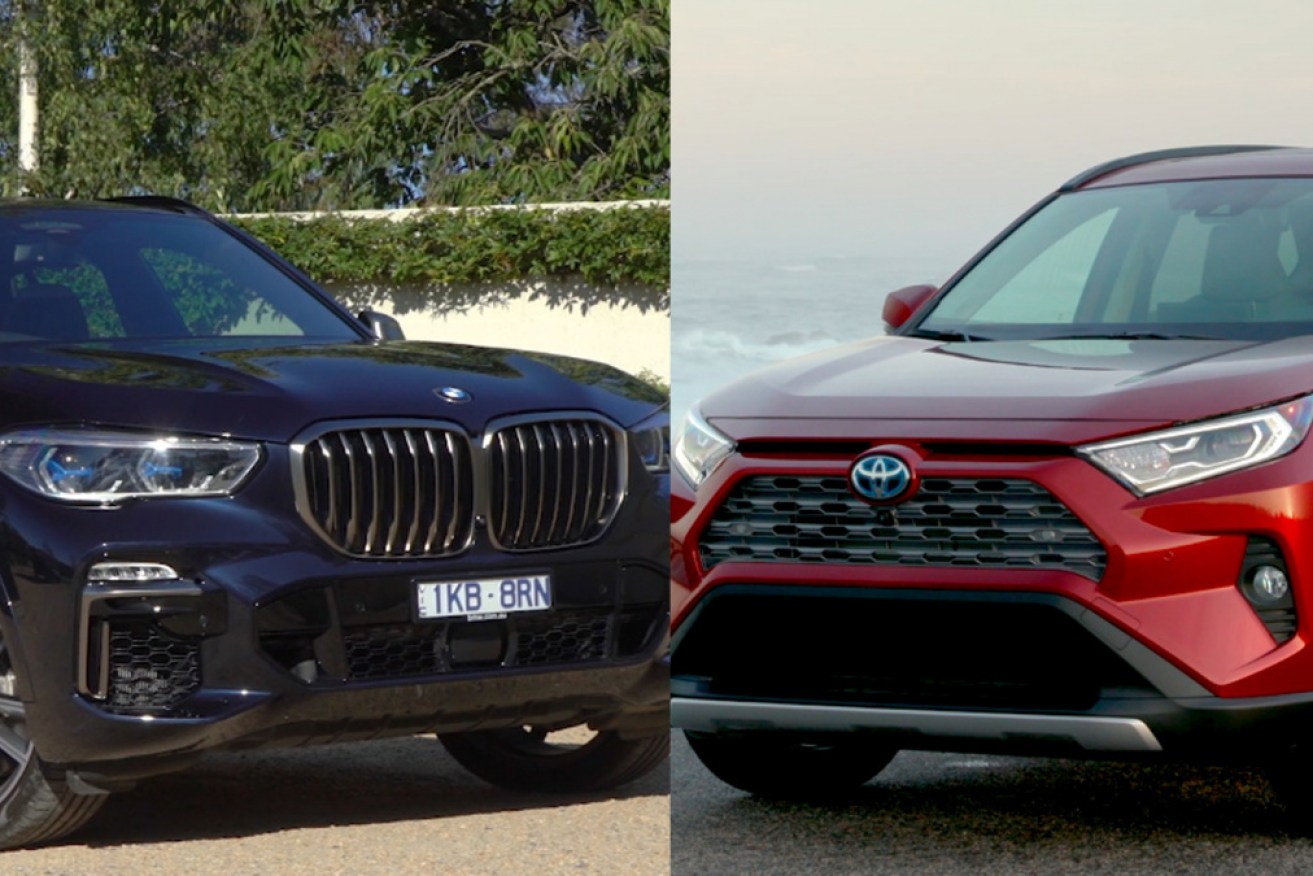
There are fears huge advertising budgets for SUVs are complicating Australia's climate plans. Photo: Getty
There’s a fundamental change in new-vehicle buying habits in Australia: People of all ages, incomes and demographics have abandoned traditional passenger cars for the high-riding wagons known as Sport Utility Vehicles (SUVs).
Nearly 43 per cent of all new vehicles sold in Australia are now SUVs. Add in the work utes – mostly 4×4 dual-cabs – that account for another 20 per cent, and traditional passenger cars are very much in the sales minority.
While Australians once flocked to passenger cars like the Ford Falcon, Holden Commodore and Mitsubishi Magna, these days we don’t even build them, let alone buy them.
Vehicle industry veterans like Mitsubishi Australia’s chief operating officer Tony Principe thinks the trend will continue.
“The trend away from passenger cars towards SUVs has been ongoing for some years. It has stabilised in 2018 in a flat market, but we expect the passenger mix to drop further once the market starts growing again.”
It’s now at the point where Mitsubishi will have only one passenger car in its range in 2019. Its big sellers are the Triton utility and ASX small SUV.
“We started our SUV positioning about four or five years ago. Now every brand is an SUV brand,” Mr Principe said.
Why so popular?
“Versatility is absolutely No.1,” said Matthew Wiesner, director of automotive strategic consultants the Raven Group.
What Mr Wiesner is referring to is the layout of SUVs: They are almost invariably five-door wagons with the ability to fit four to eight people, plenty of luggage and, of course, the all-important sports equipment.
Think about it – when was the last time you saw a TV ad for an SUV that didn’t feature a kayak, surfboard, mountain bike or a family playing on the beach?

But for all the spin, most people like SUVs for more mundane reasons.
“People can see more in an SUV and it gives them a little more assurance on the road,” Mr Wiesner said.
‘On the road’ is the key phrase here, because most people don’t take their SUVs beyond the occasional gravel road.
That’s in contrast to the early days of the 4×4 wagon boom in the late 1990s and early 2000s. Then, buyers were signing up to the dream of conquering mountains in real off-road machines.
Rise of the soft-roader
These days, as model line-ups have proliferated, most SUVs don’t have the off-roading ability their masculine looks suggest.
Many don’t have a four-wheel drive system, some are classified as SUVs but lack the ground clearance usually associated with them. Plenty of them won’t get you much further up a muddy road than a standard passenger car.
Understandably, SUVs of this type have been dubbed soft-roaders, as opposed to off-roaders. There are only a few hardcore 4×4 SUVs in the market, like the Toyota LandCruiser and Jeep Wrangler, which are suitable for true off-roading and heavy-duty towing.
But by trading in their mountain goat ability, most soft-roaders drive more like passenger cars and are also more affordable.
They’re closing the gap to equivalent passenger cars when it comes to purchase costs, fuel economy and other running expenses including servicing. They also have similar levels of safety and comfort equipment.
Retired geologist Nick Crase and his wife Pat recently traded in their Volkswagen Golf and decided it was time to move to an SUV.
They settled on a Kia Sportage, attracted by its seven-year warranty, big back and side windows and rear air-conditioning vents because they often carry their grandkids.
Let’s use Nick and Pat’s Kia Sportage as an example. Pricing starts at $29,990 plus on-road costs for a 2.0-litre front-wheel drive Si with a six-speed auto. The larger Kia Optima sedan is actually priced higher and uses more fuel because it has a bigger engine.
But drop down to the Cerato hatchback, which has a 2.0-litre engine and five seats – but is shorter than the Sportage – and you will potentially save thousands of dollars starting with a much lower entry price.

The 2018 Kia Sportage (pictured) and Cerato come with a seven-year unlimited warranty and capped price servicing, which comes out slightly cheaper for the SUV. Photo: Kia
Soft-roaders permeate every market segment and now even dominate the luxury market, where the likes of BMW sell more SUVs than passenger cars.
As the managing director of Jaguar and Land Rover in Australia for three years, Mr Wiesner saw both sides of this trend play out. While SUV-brand Land Rover boomed, Jaguar struggled to grow because it had a passenger car-based line-up.
Jaguar has started rolling out some SUVs now, but it’s still playing catch-up. Given the timelines for design, engineering and production in the car industry, if you’re behind the curve, you’re years behind.
Portable mansions
Even some of the world’s most exclusive and expensive automotive brands have been forced to play the game.
Rolls-Royce has just released its first SUV, the $685,000 (minimum!) Cullinan, Lamborghini has the $390,000 Urus, and Ferrari will follow suit in 2020 with a model codenamed Purosangue.

The Rolls-Royce Cullinan starts at $685,000. Photo: Rolls-Royce
But exotica is not limited to the exotic brands. BMW has just released its fourth-generation X5 in Australia and the flagship – for now – is a $150,000 five-seater that weighs 2.3 tonnes and has a diesel engine with four turbochargers. Two is the usual maximum.
Do people really need a vehicle like this, let alone a Rolls-Royce Cullinan? Or to put it another way, is a $150,000 BMW really four times better than a $35,000 to $40,000 Toyota RAV4?
“It’s no different to spending $30,000 on Toyota Camry versus $130,000 BMW M3,” Mr Wiesner said.
“The same principle applies. You do it because you can. That is a big part of it.
“You will pick a brand that reflects your personality. And if it’s an SUV versus a passenger car, you go the SUV because you still want some versatility. But at the same time you think you’re pretty cool because you can afford to drive that brand.”
